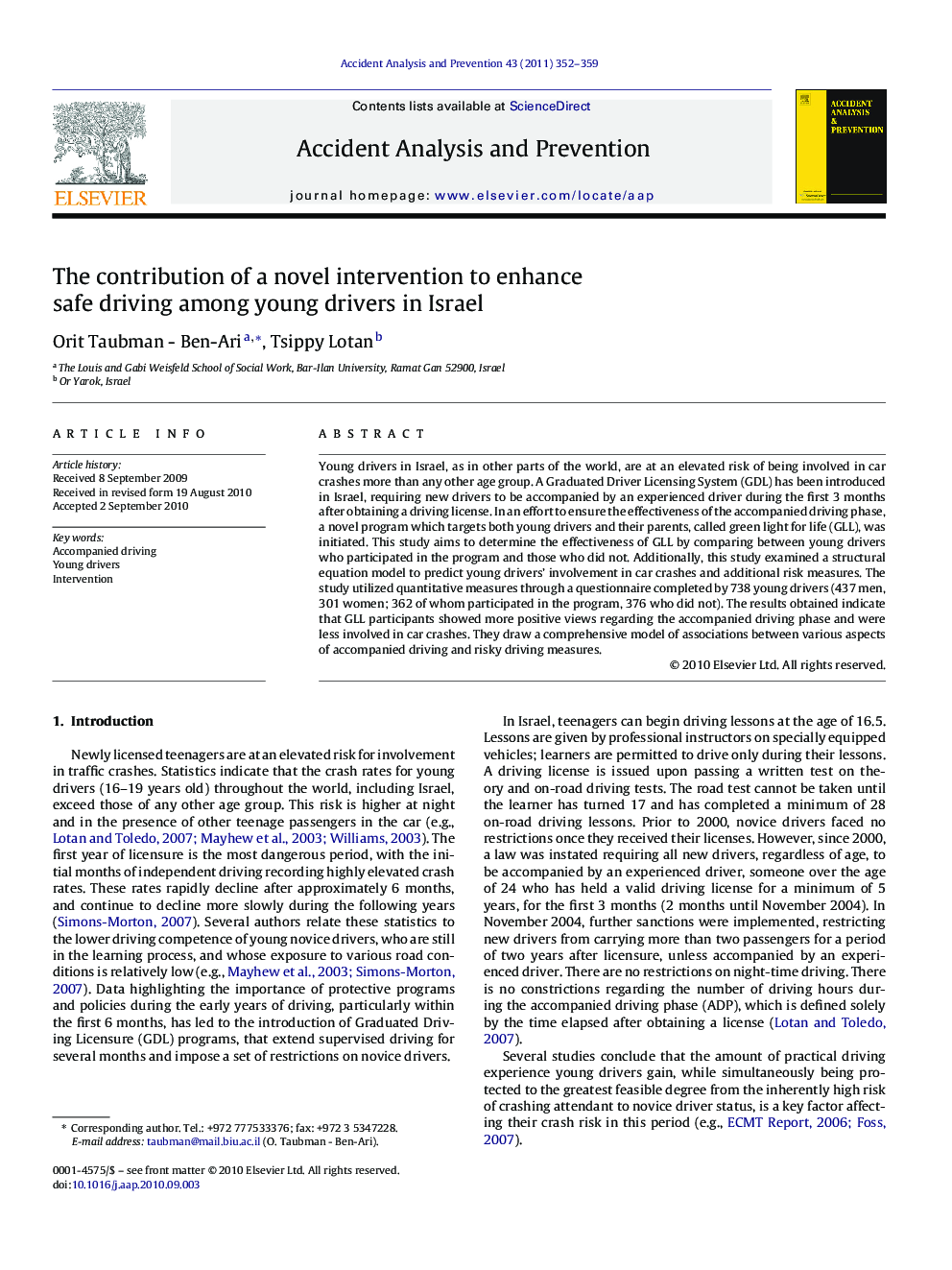| کد مقاله | کد نشریه | سال انتشار | مقاله انگلیسی | نسخه تمام متن |
|---|---|---|---|---|
| 572768 | 877377 | 2011 | 8 صفحه PDF | دانلود رایگان |

Young drivers in Israel, as in other parts of the world, are at an elevated risk of being involved in car crashes more than any other age group. A Graduated Driver Licensing System (GDL) has been introduced in Israel, requiring new drivers to be accompanied by an experienced driver during the first 3 months after obtaining a driving license. In an effort to ensure the effectiveness of the accompanied driving phase, a novel program which targets both young drivers and their parents, called green light for life (GLL), was initiated. This study aims to determine the effectiveness of GLL by comparing between young drivers who participated in the program and those who did not. Additionally, this study examined a structural equation model to predict young drivers’ involvement in car crashes and additional risk measures. The study utilized quantitative measures through a questionnaire completed by 738 young drivers (437 men, 301 women; 362 of whom participated in the program, 376 who did not). The results obtained indicate that GLL participants showed more positive views regarding the accompanied driving phase and were less involved in car crashes. They draw a comprehensive model of associations between various aspects of accompanied driving and risky driving measures.
Research highlights▶ GLL participants showed more positive views regarding the accompanied driving phase and were less involved in car crashes than young drivers who did not participate in the program. ▶ The commission of more traffic violations is directly predicted by a lower evaluation of these behaviors as risky. ▶ The role of peers is critical. Peers present a model and provide norms. These can enhance as well as reduce risk taking. Peers play a significant role in young drivers’ risky driving by contributing to increased involvement in risky driving and by the encouragement of driving without an accompanying driver. ▶ Female drivers drive less without an accompanying driver, perceive traffic violations as more risky, and take fewer risks while driving than male drivers. It turns out that female drivers are less involved in risky driving, since they evaluate it as more risky. ▶ More hours of accompanied driving contribute to more positive perceptions of the ADP and a greater evaluation of traffic violations as risky.
Journal: Accident Analysis & Prevention - Volume 43, Issue 1, January 2011, Pages 352–359